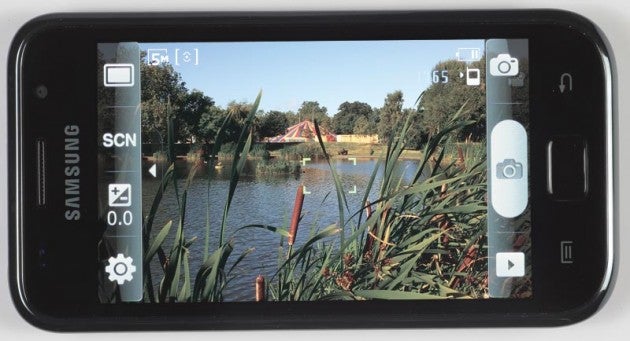How good is the camera on the Samsung Galaxy S mobile phone? Find out with our Samsung Galaxy S review
Samsung Galaxy S
Samsung Galaxy S key specs:
Camera: 5MP AF Camera w/ scene modes, HD video
Processor: 1GHz CPU
Display: 4in WVGA Super AMOLED, 480 x 800 pixels
Memory: 8 / 16GB + Micro SD
Dimensions: 64.2 x 122.4 x 9.9mm, 119g
Samsung Galaxy S camera phone review
The Samsung Galaxy S is a handset that utilises Google’s Android platform and boasts an impressive 4in WVGA Super AMOLED touch-screen. While it may not have the highest resolution of the cameraphones on test here, the Super AMOLED technology certainly ensures it’s bright and eye-catching. The first thing you notice when holding the Samsung Galaxy S is just how light it feels. At just 119g, it’s about 15g lighter than the next lightest in the group. Although this may seem like a small measure it’s certainly noticeable in the hand.
The Samsung Galaxy S is available in both 8GB and 16GB versions, though this can be increased thanks to its MicroSD compatibility. Like many of the other cameraphones on test, the Galaxy has a host of inbuilt sensors, including an accelerometer and digital compass.
The camera on the Samsung Galaxy S is by no means the highest specified of the handsets on test, but is still more than adequate on paper. The camera has a 5MP sensor, complete with a range of scene modes and touch-to-select focus points. Basic exposure settings also feature, as does basic image editing. Finally, the camera benefits from 720p HD video recording at 30fps, which is up there with being as good as the rest of the group.
Samsung Galaxy S image quality

Image: Photograph taken with the Samsung Galaxy S camera phone
On the whole, image quality with the Samsung Galaxy S is disappointing – white balance is unreliable, images appear soft overall and images appear to suffer from aggressive processing.





